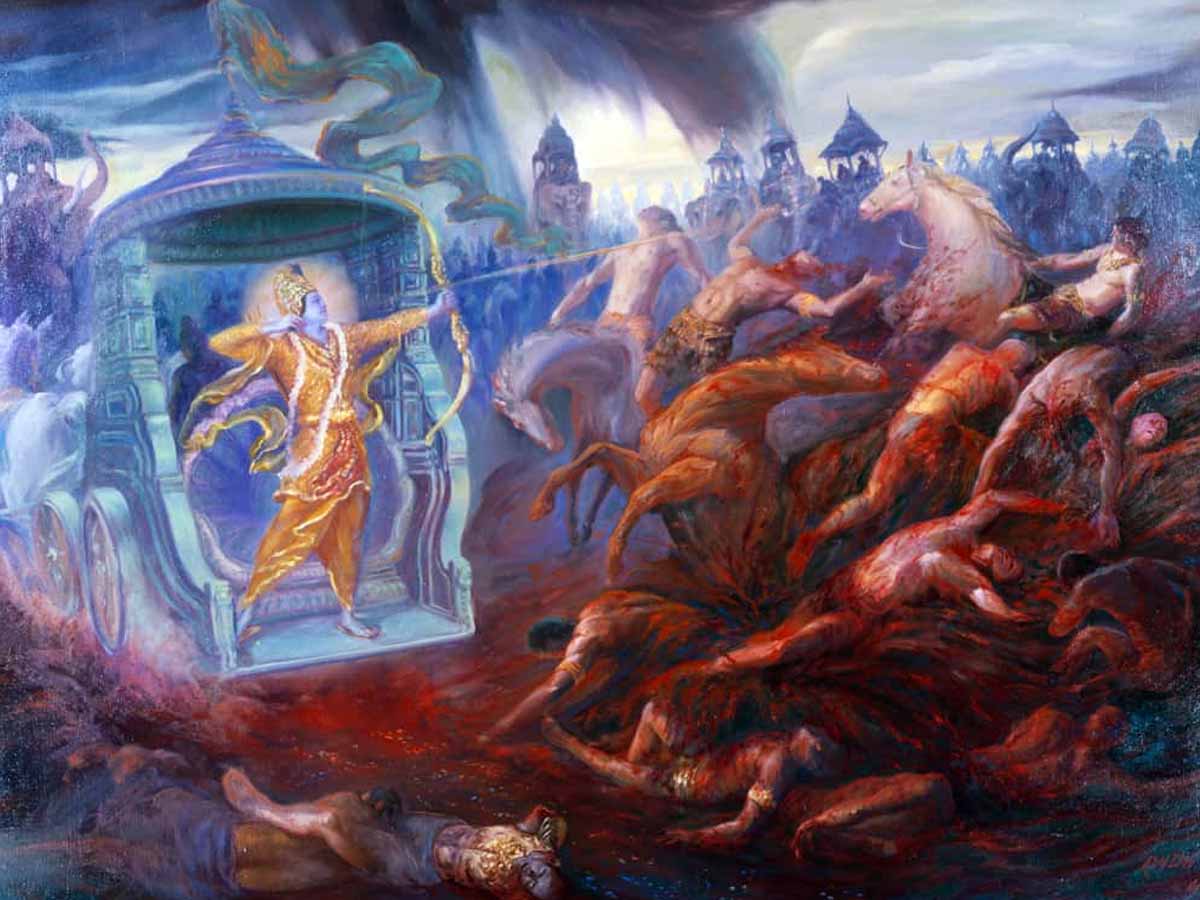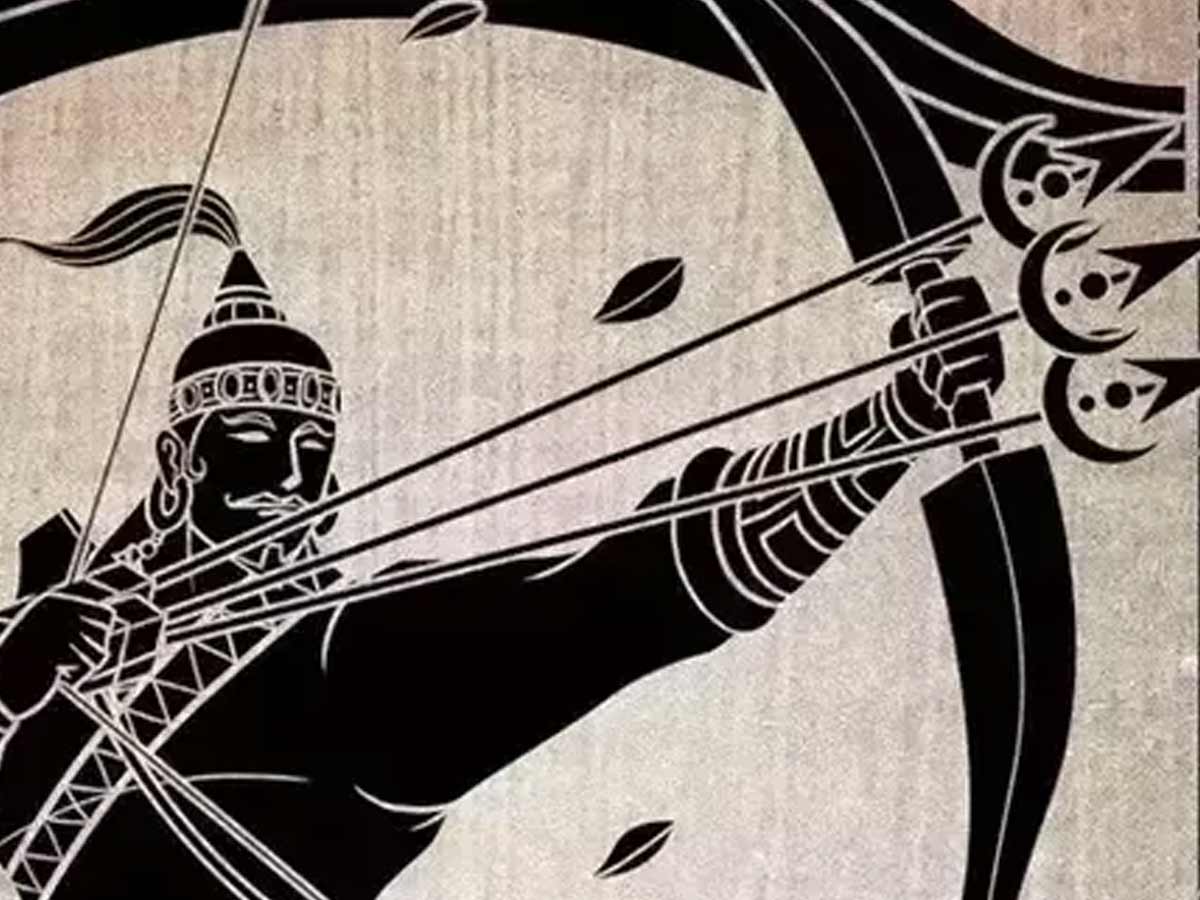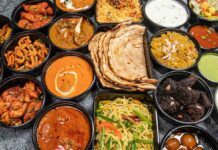The details from Mahabharat are unknown and little understood. One of India’s two most essential epics is Mahabharat, the second is Ramayana.
Mahabharat is the most feared fight called the Kurukshetra War between the Kauravas brother and the Pandava throne. Lord Krishna, right before the face-off, recited the major Bhagavad Gita to Arjuna.
The Hindu epic was proclaimed and retrieved for centuries and has some literary licenses and communication distortions for a large-scale epic. However, it has now been correctly collected and published many times over the digital media. Nevertheless, you’ll be surprised to know even lesser-known facts from The Mahabharat. To get an insight into the historical dimensions of this great Epic, I strongly suggest reading Mahabharat’s history.
25 Fascinating Lesser Known Facts of The Mahabharat That You Must Know About
The original name of Mahabharat was Jaya (‘Jayam’)

Until very recently, Mahabharat had not been named so. Originally it was called Jayam or Jaya. The initial Epic was renamed “Jaya,” then “Vijaya,” then “Bharat,” and then “Mahabharat.”
Jaya had about 25,000 words, while the final verse had more than 100,000 verses. Jaya was a divine victory, Vijaya was a material victory, Bharata was a clan tale, and the wisdom of the earth, Bharat-Varsha. It was also a clan story.
What started as a favorable idea became extensive documentation of truths that terrified the ordinary man. Many contemporary scientists, authors, and drama writers are persuaded that Mahabharat is all about the futility of battle, tired and overcome by the final edition’s story’s labyrinth.
Vedvyas is a post rather than a name.

We are all conscious that Vedvyas and Lord Ganesha have written Mahabharat. Vedvyas is a post issued, not a name but to those who knew Vedas.
Before Krishnadweepayan, there were 27 Vedvyas. And Krishnadweepayan was the 28th Vedvyan born on the island as he had a wheatish skin, like Lord Krishna.
The spirit of a demon was inside Abhimanyu.

The spirit of a Daitya (demon), called Kalyavana, was originally Abhimanyu. Krishna had caught his soul after burning Kalyavana to death and just carried him into a closet to Dwaraka.
Krishna says that Abhimanyu was the embodiment of a mighty demon called (Kalayvan), who later could destroy him. His only partial understanding of Chakravyuha is Abhimanyu’s vulnerability.
This is the only means by which Abhimanyu can reach moksha. The chakravyuha was deliberately initiated to destroy Abhimanyu. Consequently, Krishna never teaches him the “how to come out of Chakravyuha.
Mahabharat was really a world war.
The true struggle was not only between Pandavas and Kauravas but also between forces from Rome and Greece.
The war caused massive devastation, utterly collapsed the social system, and raised concerns about humanity’s future. But it was five thousand years before.
The five golden arrows that may have slaughtered all Pandavas

During the battle, Duryodhana was accused of harming Pandavas and encouraging them, as was Bhishma on the Kaurava side. When he learned it, Bhishma was furious and took five gold arrows with mantras in his rage.
He promised that before Sunset, the Pandavas will die. On the other day, Duryodhana believed that Bhisma was never incorrect, so he took the arrows with him.
Also Read, 10 Places In India Whose Links Can Be Traced Back To The Times of the Epic Mahabharata
Mahabharat was not the first battle of Kurushetra

Kurukshetra is named after King Kuru, a former of Kauravas and Pandavas, as portrayed in the epic Mahabharat. Indian Hindu holy book Puranas references Kurukshetra.
The importance of the site is since the Mahabharat war in Kurukshetra took place in this country.
However, many do not know that the first war in the area or on the battlefield was not Mahabharat. It was the fight between Bhisma Pitamah and Lord Parshuram, who was previously a reincarnation of Load Vishnu.
None of the major combatants can overcome the other. Sure, Bhisma Pitamah was such a great warrior.
Pandu’s Knowledge exchange and cannibalism

Pandu (Pandavas’ Father) wished that his sons would have to consume their flesh after their death so that all the wisdom he gathered after so many years would be transferred into them. Only Sahadeva ate a piece; he could see the future as soon as he ate, but he could stop with God. He was a happy astrologer and could look forward to the future.
Ekalavya was the cousin of Krishna.

Many people aren’t aware that he was the son of Devashrava (Brother of Vasudeva). During Rukmini Swayamvar, Ekalavya died defending his dad.
Krishna has been assassinated. Ekalavya was blessed by his great sacrifice of Gurudakshina Krsna that he shortly will reincarnate himself and take vengeance upon Drona. He was Dhristadyumna (who kiled Drona).
Barbaric, Ghatotkacha’s son, had a special force that made Krishna request his head of charity.

Barbaric was meant to be the great warrior for Bheema’s grandson (Ghatotkacha’s son). Through Lord Shiva’s blessings, he had special arrows with which he could mark his allies, mark all he desired, and then kill all his enemies. Like that, in a one-minute flat, he would have ended the fight. However, Krishna knew better than that. Barbara was still struggling for the weaker side due to an oath to his mother. Krishna seemed to him like a brahman, and he argued that any side he had taken would be better by nature.
So he’d have to continue to change parties before everyone was dead. He then asked for his head because the battlefield must be cleansed by sacrificing the bravest of Kshatriya before the war. The biggest Kshatriya was forced to survive and become Barbaric. So Krishna saved the Pandavas from losing the battle.



























